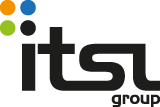As well as socio-political change, the internet has changed our entire business outlook, the way we conduct transactions and the markets we feel we can explore. No longer do business leaders feel they need to be at every meeting in person, nor do they impose rigid working time and attendance on staff allowing more freedom than has ever been experienced before.
‘Bring Your Own Device’ (BYOD)
As business changes, so must traditions and working practices, which we have seen slowly evolve over the last 10 or so years. The practice coined as ‘Bring Your Own Device’ (BYOD) has seen consumer technology, often lauded as ‘desirable’ or ‘lifestyle’ become more capable than the devices issues by IT departments.
Desirable, personally-owned devices are preferable to the majority of employees versus the bland, single purpose business device. Nothing exemplifies this better than the trendy Apple iPhone vs the bland RIM Blackberry. RIM were in trouble because they didn’t innovate and listen to the people who use the devices.
The Smart Meeting Room
The meeting room must, therefore, be smart and be able to accommodate a wide range of devices and technologies, given that there is diminishing governance of devices of staff and visitors. The meeting room must be innovate and evolve quickly with technology while being easy to use and encourage interaction.
While traditional meetings may be on the decline because of the collaboration tools available to us today, meetings in person and over video are still vital in fostering a sense of community and team work in both on site and distributed teams. At ITSL, we want to make meetings easy and efficient. That’s why we have our top seven list of meeting room requirements.
Top 7 list of meeting room requirements:
- Quiet and Private
Surprisingly, the number one on this list involves no technology at all. A meeting room that is painful to sit in because of noise leaking in or confidential conversations leaking out won’t do the business any good at all. - Easy to use
A successful meeting probably doesn’t start with the presenter hunting around under the table for a power socket and then trying to find batteries for the remote control. Any installed technology should be clear and simple, activate with no more than one button push - Video Enabled
If the business has remote staff, branch or overseas offices, this is vital. Reducing travel and encouraging face-to-face communication amongst teams is key to productivity. Home workers equally need to be valued and brought into office, at least virtually regularly. - Robust
Electronics and hardware should be able to withstand everyday use with minimal maintenance. We recommend against installing projectors wherever possible and advise quality table AV connections are installed. - Available
The meetings rooms in any organisation should be bookable and one should monitor attendance. Meeting room booking panels outside the rooms make it clear when a room should be in use and when someone hasn’t given it back after a cancellation. - Maintained
A team should carry out scheduled maintenance and tests weekly. The idea is that staff can turn up and conduct a successful meeting. Finding any issues before the users do is important and maintains a happy workforce. - Upgraded
Technology isn’t standing still and neither should your meeting rooms. Embracing the latest (read tested and new) technology is important and will help keep your enterprise on the cutting edge of communication and business as a whole. Showing visiting customers and suppliers you use the latest technology is a great marketing tool.
The meeting room is far from dead even with distributed work force, home workers, hot-desking and flexible hours. Not dead but vital to bring back together teams with technology that in a way, technology has pushed apart.

